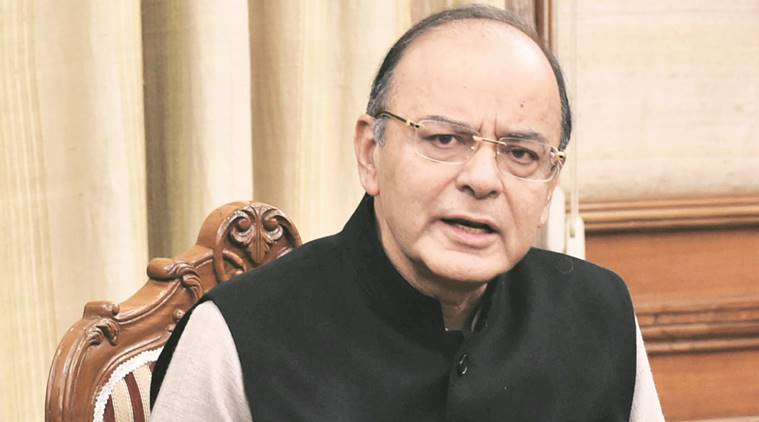A day ahead of the Union Budget, the Economic Survey for 2016-17 tabled in Parliament by Finance Minister Arun Jaitley does not present a bright picture for the next financial year 2017-18. While it does expect the growth rate to inch up, placing it within a wide band of 6.75-7.5 per cent, it warns of downside risks due to rising oil prices, trade tensions and increasing protectionism.

In the current year or 2016-17, the Survey expects the economy to grow 6.5-6.75 per cent, with demonetisation lopping off 0.25-0.5 percentage points from a baseline growth of 7 per cent.
Read | Economic Survey 2017: Everything you need to know
WATCH VIDEO | Budget 2017 Interview: Keki Mistry, Vice Chairman & CEO, HDFC On Affordable Housing & More
Story continues below this ad
The Central Statistics Office (CSO), in the first advance estimates for 2016-17, had projected India’s GDP to grow 7.1 per cent, not taking into account the impact of demonetisation. The Survey also adds that recorded GDP growth in the second half of this year will “understate the overall impact” because the most affected parts of the economy — informal and cash-based — are either not captured in the national income accounts or their measurement is based on formal sector indicators.
In an interview to The Indian Express, the Survey’s principal author and Chief Economic Advisor Arvind Subramanian, however, warned that closing H1B visas and restrictions on outsourcing will affect growth by affecting exports. While the Survey is optimistic about exports due to expectations of a fiscal stimulus by the US, he said India was quite vulnerable to restrictions on services.
WATCH VIDEO | Does Budget 2017 Incentivise Investment Into Housing Or Not?
“The kind of difference between China and Mexico and us is that Mexico and China are much more vulnerable to restrictions on manufacturing.
We are much more vulnerable to restrictions on services and the H1-B kind of attack in a direct way, so one has to worry quite a bit that any reversal of globalisation in this atmosphere could also mean restrictions on exports of services and that’s bad news. We cannot move towards 8-10 per cent (growth) if that’s the way the world markets (behave)…then we have to revise down realistically our growth target and potential,” Subramanian said.
Story continues below this ad
India’s period of rapid growth of 8-9 per cent would not have been possible without the exports growth of 25 per cent, he added.
According to the CEA, the immediate challenge faced by the economy was the twin balance-sheet problem — over-leveraged companies and bad loan-encumbered banks.
When asked why has the government not been able to tackle this festering problem, he said, world over this is a very difficult problem. “It’s less about banks than it is about companies. Most stressed debt is with large companies. And then, there is always a temptation to see this as a morality play – that the guy has got away with it, and not as an economic problem, which it is today. In India, it’s doubly difficult because you have what you call the 4C problem – Court, CVC, CBI and CAG. I don’t mean to be pejorative, but this is a fact of life,” Subramanian said.
WATCH VIDEO | Does Budget 2017 Incentivise Investment Into Housing Or Not?
Story continues below this ad
The Survey has advocated the setting up of a Public Sector Asset Rehabilitation Agency, similar to what East Asian countries did after severe twin balance sheet problems in the 1990s.
Also, private investment is unlikely to recover significantly, the Survey said, from the levels of FY2017. “Some of this weakness could be offset through higher public investment, but that would depend on the stance of fiscal policy next year, which has to balance the short-term requirements of an economy recovering from demonetisation against the medium-term necessity of adhering to fiscal discipline – and the need to be seen as doing so,” it said.
The document has also flagged the Universal Basic Income (UBI) scheme as “a conceptually appealing idea” that could work as an alternative to the various social welfare programmes that are targeted at reducing poverty. There were a number of implementation challenges, especially the risk that it would become an add-on to, rather than a replacement of, current anti-poverty and social programmes, which would make it fiscally unaffordable, it noted.
Listing the other challenges, the Survey said that vigilance would be essential to prevent a price spiral for certain agricultural products such as milk, sugar, potatoes and onions, whose supplies get affected due to currency shortages. The scope for monetary easing might also be narrow, if higher oil prices stoked inflationary pressure, it added.
WATCH VIDEO | Budget 2017 Expectations: Taxes
Story continues below this ad
Detailing the impact of demonetisation on the economy, the Survey said, short-term costs have taken the form of inconvenience and hardship, especially those in the informal and cash-intensive sectors of the economy which have lost income and employment. “These costs, however, are transitory, and may be minimised in recorded GDP as it estimates informal activity on the basis of formal sector indicators, which have not suffered to the same extent as informal sectors,” the document said.
In the long-term, demonetisation has the potential to generate benefits in terms of reduced corruption, greater digitalization of the economy, increased flows of financial savings, and greater formalization of the economy, all of which could eventually lead to higher GDP growth, better tax compliance and greater tax revenues, it said.
Since the magnitude and extent of short-term costs of demonetisation are uncertain, the Survey said that certain policy responses are needed by remonetising the economy “expeditiously” by supplying as much cash as necessary, especially in lower denomination notes, bringing land and real estate into the GST, reducing taxes and stamp duties and ensuring that the follow-up to demonetisation does not lead to over-zealous tax administration.
The Survey said that the Indian economy recovering from demonetisation will need policy support, which could be in the form of lower policy rates and fiscal policy support as there is cyclical weakness on account of demonetisation.

 Finance Minister Arun Jailtey (File Photo)
Finance Minister Arun Jailtey (File Photo)






























